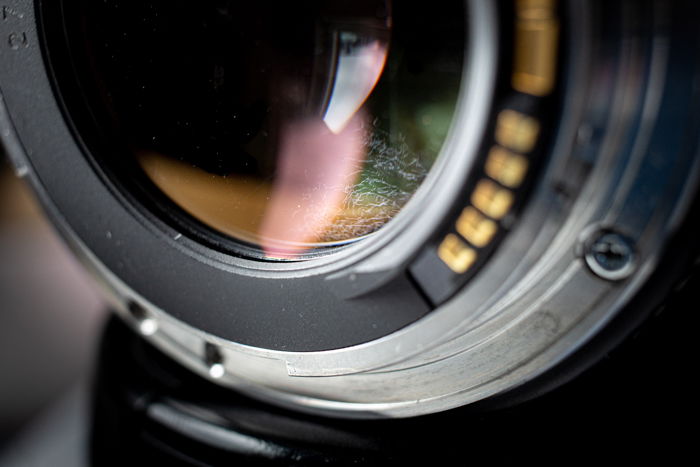Just like dirt, camera lens fungus is a headache for photographers. It can cause severe problems if not dealt with quickly and professionally.
Camera lenses play a huge role in creating the perfect image, so it is essential to keep them clean. One of the less-known camera pollutants is lens fungus.
This article looks at what lens fungus is and how to get rid of it.

What Is Lens Fungus?
Dust can easily find its way into your lens. Sometimes it contains fungus spores. When it meets with moisture, the fungus can grow inside the camera lens. When it starts to grow, lens fungus looks like little spiderwebs. After a while, the fungus becomes visible to the naked eye.
Fungus is prevalent in old lenses. This is because fungus prefers dark and humid places. So, by putting away your older lenses, there is nothing to interrupt the growth of the camera lens fungus.
Lens fungus can make your image quality worse and permanently decrease the performance of the camera’s optics. Your lens may lose its clarity, which makes focusing harder. Also, you may encounter significant loss in contrast and extra lens flare when shooting into the light.

Can Lens Fungus Be Removed?
When you find it on the outside of your camera, you can even try removing it at home. Make sure to use cleaning kits specially made for lens cleaning purposes.
When it concerns the interior parts of your lens, you should take it to a professional.
Alcohol and other liquids can easily end up causing a bigger problem. Even if they are able to kill the fungus, there is a risk that they will seep into your lens. As a general rule, placing a half and half mix of hydrogen peroxide and household ammonia on the glass is enough to make fungus disappear.
If you put your camera lens in a sunny place, UV rays can kill the fungus. The problem is that the fungus will turn into dust. Dust is better because it cannot grow, but you will still have something to remove.
At the end of the day, prevention is the best approach to dealing with lens fungus.

How to Prevent Lens Fungus?
It is much easier to prevent your lenses from getting fungus than to remove it when it is there.
Here are some tips on how you can do that:
- Carry your camera in a safe bag.
- Use a rain cover when you are shooting amongst bad weather conditions.
- Use a hood on your lens. Besides protecting your images from unwanted light-rays, it protects your lens from dust.
- Use a UV filter. This also prevents your camera lens from getting dusty. At the same time, pay attention not to have moisture under it.
- Keep your lenses in a dry and bright place.
- Always let your lens dry out. After shooting in a tropical location or in the rain, put your lenses somewhere they can breathe. Make sure to put it in dry air.
- Put silica gel wherever you store your lenses.
- Remove dirt from your lens as soon as you notice it.
- Do not touch your lens with dirty hands. Oily fingerprints on the glass can be a great substrate for camera lens fungus.
- Do not blow on your lens. Use a blower instead.
- If you see that you will not be able to clean your lens, take it to a professional as soon as possible.

Conclusion
Camera lenses are susceptible to lens fungus. We recommend keeping them clean. This can be as easy as buying some silica gel. Or you can take it to another level by having your own vitrine.
You should not only pay attention to your lenses. The other parts of your camera are just as important as lenses are. The fungus can appear, for example, on the viewfinder too.
Fungus inside the camera lens can cause damage, not only by itself. Even cleaning the inside of your lens using professional tools is risky. If you are not cautious enough, you may end up damaging your whole lens. This is something that is not worth risking.
With a clean lens, you can make attention-grabbing products that sell with our Products in Focus course!


